Author: Xiaodong Xu
On July 26, according to the Hong Kong Stock Exchange documents, Li Auto has passed the Hong Kong Stock Exchange listing hearing. Goldman Sachs and CITIC Securities are the joint sponsors for this offering and UBS is the financial adviser.
On July 30, 2020, Li Auto was listed on NASDAQ with the stock code “LI”. After one year of listing on the US stock market, Li Auto was dual-listed on the Hong Kong Stock Exchange, making it the second new car manufacturer after XPeng Motors to be listed in Hong Kong.
This prospectus also disclosed a lot of important information, detailing Li Auto’s future products, smart cockpit, autonomous driving, charging network and other aspects. Let’s take a closer look!
Vehicle Platforms X, Whale, Shark
Li Auto stated in the prospectus that it will continue to focus on the new energy vehicle market between RMB 200,000 and 500,000.
In addition, Li Auto also revealed new models to be launched in the next two years, including three extended-range SUVs developed on the X platform and high-voltage pure electric vehicle models developed on the Whale and Shark pure electric platforms. The Whale platform is positioned to prioritize space, while the Shark platform is positioned to prioritize performance.
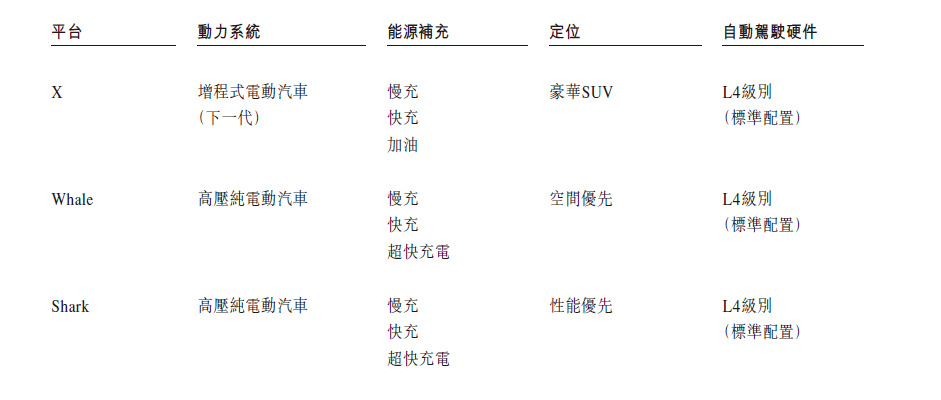
Based on the released images, in addition to an extended-range SUV to be available in 2022, Li Auto will also launch four new models in 2023. The “dumpling making mode” is officially opened, getting closer to Li Auto’s 1.6 million-unit goal for 2025.
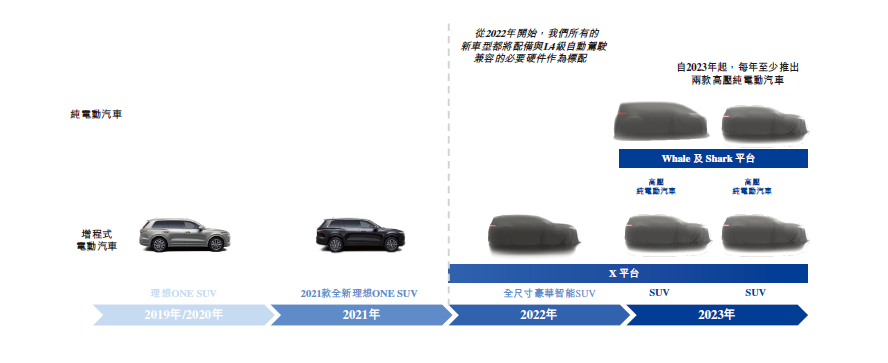
In 2022, Li Auto’s first full-size SUV on the X platform, the Li Auto X01, will be launched. Compared with the old platform, the X platform can support longer mileage, higher thermal efficiency, and better NVH performance. This further improves the integration of the extended-range system and motor to obtain higher power output and better acceleration. At the same time, the new chassis will support a larger body, providing a better driving experience.
As a pioneer in the extended-range field, Li Auto has also made early deployments in pure electric vehicles. In 2020, Li Auto began to invest in new-generation electric vehicle technologies, including high-rate battery packs, high-voltage platforms, thermal management systems, and high-power charging networks. Now we will explain these four technologies separately.The high-ratio battery pack will have a 4C fast charging capability. In addition, the high-ratio battery pack will adopt the CTP or CTC scheme, which removes the module or even the battery pack, and directly integrates the battery cells into the chassis. This will greatly improve the energy density of the battery. In summary, the high-ratio battery pack is “lighter, lower cost, higher endurance, better safety, and faster charging efficiency.”
In terms of architecture, the ideal uses SiC material electronic components and high-power-density electric power system to design a high-voltage platform. The advantage of the high-voltage platform is that it allows the car to charge faster. The high-voltage platform, coupled with SiC power modules, can give pure electric vehicles more powerful performance with lower energy consumption.
In terms of thermal management system, the ideal chooses to install a carbon dioxide heat pump system. Compared with the R1234yf used in traditional heat pumps, CO2 has a lower boiling point, which makes it more efficient in heating in cold weather and can better solve the heating and endurance problems of new energy vehicles in winter. Moreover, CO2 is non-toxic and harmless, and has excellent environmental performance.
Finally, the ideal mentions the high-power charging network. The biggest disadvantage of electric vehicles compared to traditional fuel vehicles is the efficiency of energy replenishment. This is also the reason why extended-range electric vehicles appeared. From the above three points, we can see that when planning the pure electric vehicle platform, the ideal also considers the replenishment efficiency for users. In a conference call in the third quarter of 2020, Ideal CEO Li Xiang said, “Currently, pure electric vehicles are still not convenient enough for users. Ideal Auto will not launch pure electric models until 400 kW fast charging technology matures.” It can also be seen that when launching pure electric vehicle models, Ideal focuses on user convenience. Therefore, a high-power charging network has become an indispensable part.
In terms of the layout of the high-power charging network, Ideal will plan the charging facilities layout in multiple cities in China according to high-speed and high-frequency urban use scenarios. However, in the risk factors of the prospectus, Ideal also mentioned that “there is still uncertainty regarding government support for high-power charging networks, and this support is also critical to Ideal’s plan to launch high-voltage pure electric vehicles.”
From the beginning, the appearance of extended-range electric vehicles solved user range anxiety. With the development of electric vehicle technology and the improvement of electrification technology, extended-range electric vehicles are destined to become a thing of the past. Ideal’s new Whale and Shark pure electric platforms will still prioritize bringing better experiences to users without worrying about range anxiety.## Intelligent Cockpit & Autonomous Driving
While developing a new vehicle platform, NIO did not stop its pace in the areas of autonomous driving and intelligent cockpit. In the prospectus, NIO introduced its future intelligent interactive system and autonomous driving system.
Besides the current intelligent interactive system on NIO ONE, NIO will also integrate an in-cabin sensing system, a fusion map, a vehicle-cloud network, and an integrated automotive control and computing unit on the intelligent cockpit in the future.
Firstly, NIO’s in-cabin sensing system will be built by installing a series of sensors through 3D modeling. What is the in-cabin sensing system? Currently, the most common driver fatigue monitoring can be regarded as part of the in-cabin sensing system. Of course, the content of the future in-cabin sensing system will be more diverse. For example, when different drivers get in the vehicle, the vehicle will automatically match different driver’s settings, including voice and gesture recognition, and the tension of each passenger’s seat belt. If a child is trapped in the vehicle, the vehicle can automatically call the owner’s mobile phone, open the window, activate the horn, and emergency lights in emergency situations, etc. However, NIO has not yet revealed more specific functions of the in-cabin sensing system.
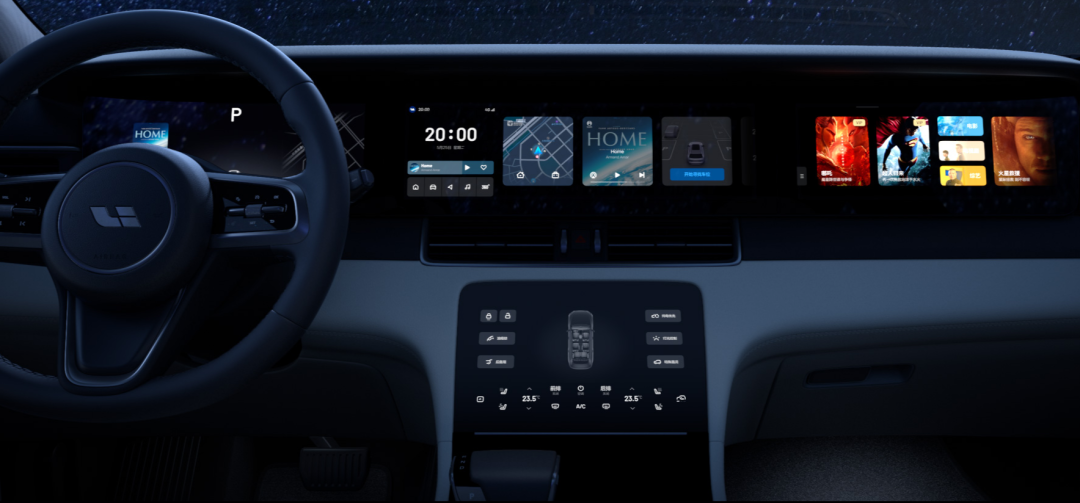
Additionally, NIO will fuse high-precision and navigation maps, which can seamlessly connect autonomous and non-autonomous driving. At the same time, NIO’s new generation of vehicle-cloud system Mesh achieves communication between vehicles, cloud, and APP through a distributed network. The whole system can still maintain consistency under weak network conditions.
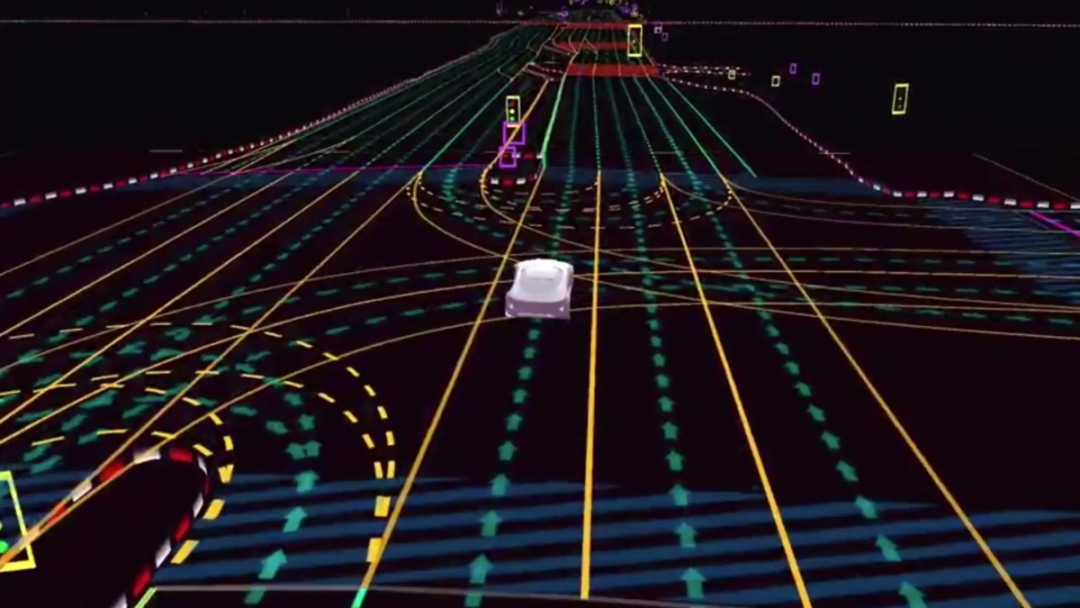
In terms of intelligent vehicle control, NIO is highly developing integrated automotive control and computing units to enhance vehicle hardware performance and intelligent vehicle control. The vehicle control computing unit executes cross-domain control calculation between the vehicle power system, chassis, central network, and body, and collaborates with cloud platforms and other onboard computing units to achieve intelligent vehicle control.
NIO plans to make more efforts in autonomous driving. NIO will establish a self-developed, full-stack software development capability that integrates sensing, planning, and control in the second half of 2021. At the NIO ONE 2021 new product launch event, it was also mentioned that the new version of NIO ONE will bring a brand new driving assistance experience through OTA upgrades in the third quarter of this year.
In addition, NIO has developed a self-developed autonomous driving data platform that collects driving data through “shadow mode.” Shadow mode can encrypt and upload the driving decisions and patterns of human drivers in different scenarios to the cloud database of automatic driving data platform, and improve automatic driving capabilities through analysis and training to enhance users’ autonomous driving experience.The X01 will collaborate with Nvidia using the Orin chip for hardware, with a single-chip computing power of up to 254 Tops, combined with high-definition cameras, lidar, millimeter-wave radar, etc., providing L4 level autonomous driving for users.
Starting in 2022, all new models from Ideanomics will have the necessary hardware for L4 level autonomous driving as standard. This means that the more Ideanomics cars on the road, the richer the data will be through shadow mode, which will accelerate Ideanomics’ autonomous driving capabilities.
R&D team & production capacity
From the first quarter of 2020, Ideanomics’ R&D funding increased from RMB 190 million to RMB 510 million in the first quarter of this year. Ideanomics CEO Li Xiang also stated that Ideanomics’ investment in R&D in 2021 will increase to RMB 3 billion, and R&D expenses will continue to increase in the coming years.
The new platform, intelligent cockpit technology, and autonomous driving technology of Ideanomics are all burning cash. Funding cannot be separated from talent, and Ideanomics revealed in its prospectus that it will strengthen cooperation with domestic and foreign universities to improve smart car technology.
In early 2021, Ideanomics CEO Li Xiang also mentioned in a Weibo post that Ideanomics plans to recruit 2,000 people in Shanghai and 1,000 people in Beijing, including engineering and R&D talents in artificial intelligence, hardware, software, data, etc. In May of this year, Ideanomics’ R&D center in Shanghai officially started operation, further expanding the scale of the R&D team.
As of March 31, 2021, Ideanomics’ R&D personnel totaled 1,633, accounting for 33% of all employees, including the automotive design and engineering, intelligent system, and autonomous driving departments. After the release of Ideanomics’ Q2 financial report, I believe that Ideanomics’ R&D team will undergo significant changes.
The emergence of the three new vehicle platforms will pose a considerable challenge to Ideanomics’ production capacity, as the production capacity of the Changzhou factory is far from enough. Only one place in this prospectus revealed Ideanomics’ next factory plan.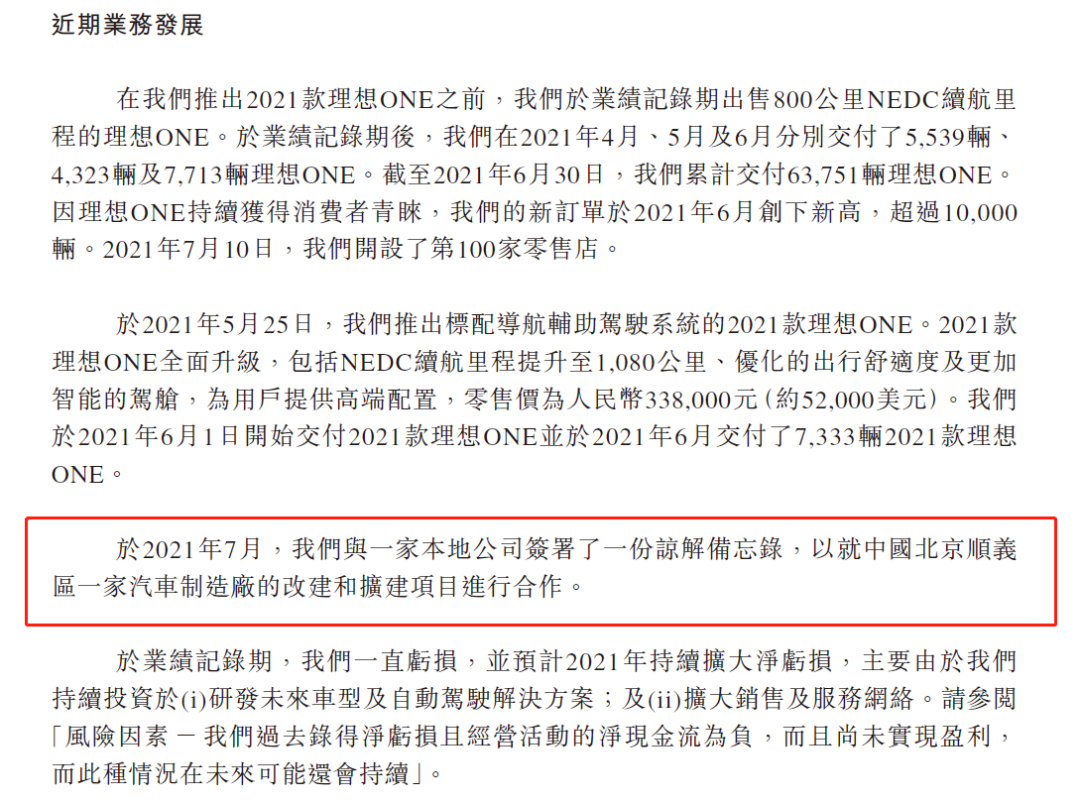
Recent news and prospectus indicate that the new factory, which will start production in 2023, is confirmed to be Hyundai’s first factory in Beijing Shunyi that was acquired by Li Auto. The planned annual production capacity will reach 250,000 vehicles. At present, the Li One is manufactured in Changzhou factory with an annual capacity of 100,000 vehicles and a utilization rate of 36% in 2020. By increasing the installation of machinery and production lines, the maximum production capacity of the Changzhou factory can be expanded to 200,000 vehicles per year. Li Auto is planning to reconfigure the Changzhou factory to prepare for the arrival of the X01.
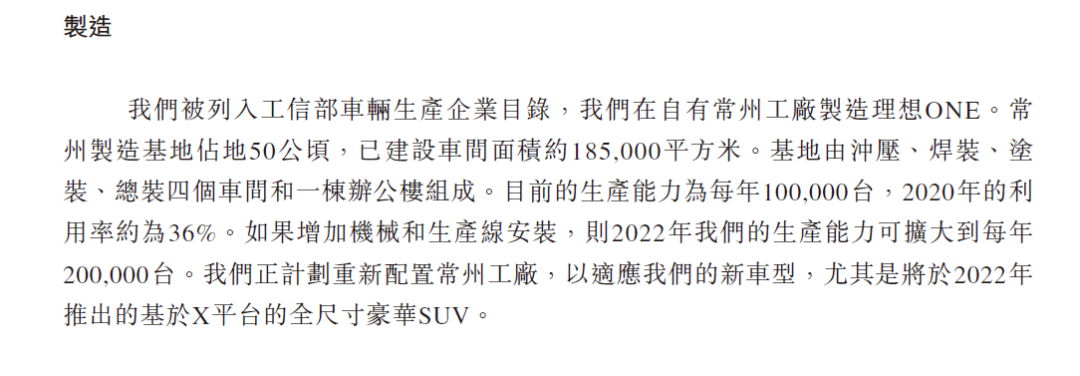
Moreover, Li Auto will continue to develop advanced production technology and improve automation to ensure product quality. With the completion of the expansion of the Changzhou factory and the new factory in 2023, the planned annual capacity of 450,000 vehicles from the two factories is believed to meet Li Auto’s production needs.

Undoubtedly, research and development as well as production capacity are among the most important aspects of new car makers. Li Auto continues to expand its R&D team, leading consumers forward. Its production capacity layout is the strongest support behind Li Auto.
Conclusion
New platforms, next-generation intelligent cockpits, and autonomous driving are like hungry children. Without financial support, it is difficult to develop rapidly. Li Auto went public in Hong Kong before NIO to obtain more financial support for accelerating its intelligent development and electric layout. However, all of the vehicle models announced by Li Auto are SUVs. Will there be more models in the future?
This article is a translation by ChatGPT of a Chinese report from 42HOW. If you have any questions about it, please email bd@42how.com.